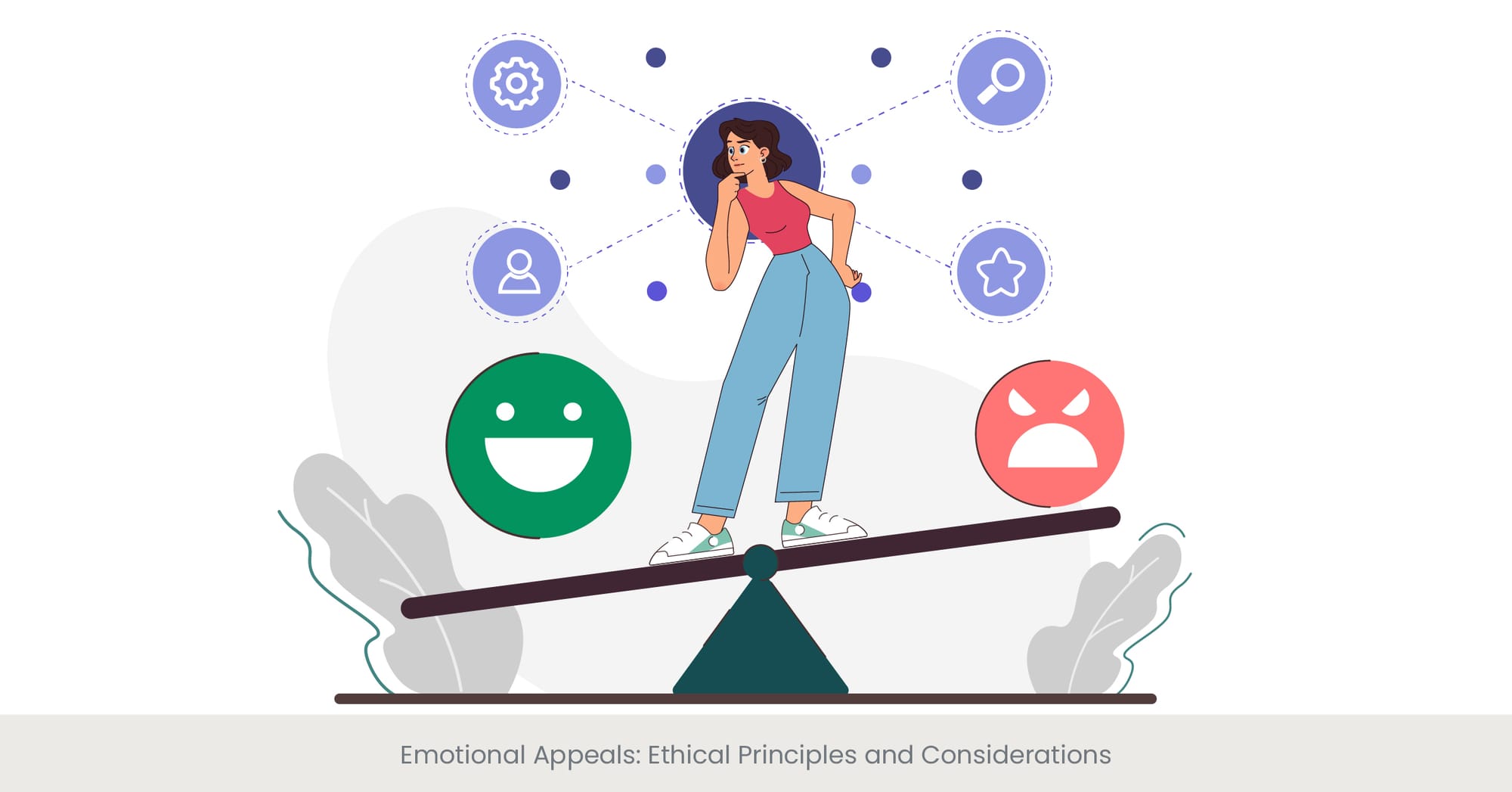
Principles of Persuasion in Human Communication: Cialdini’s Influence

Introduction to Cialdini’s Influence
Dr. Robert Cialdini’s principles of persuasion have revolutionized how we understand influence and persuasion in various fields, from marketing to management. His six key principles—reciprocity, commitment and consistency, social proof, authority, liking, and scarcity—are foundational in crafting effective persuasive communication. This section will explore how these principles can be effectively integrated into talk tracks to enhance persuasive impact.
Background on Cialdini’s Principles
Robert Cialdini’s book, “Influence: The Psychology of Persuasion,” is a cornerstone text that outlines the psychology behind why people say “yes” and how to apply these understandings. These principles are not just theoretical; they are backed by rigorous research and practical analysis. Each principle taps into certain human tendencies and social behaviors that can significantly affect our personal life and professional interactions. Having a deep knowledge of these principles is crucial for effectively applying them in persuasive communication, as it allows for a more nuanced understanding and strategic use of each principle to influence outcomes.
Real-World Applications of Cialdini’s Principles
In the context of talk tracks, these principles can be transformative. For example, sales professionals can incorporate elements of scarcity (“This offer is available for a limited time”) and social proof (“Many of your peers have chosen this option”) to compel decision-making. Another practical application is in leadership, where showing commitment and consistency helps in building trust and encouraging team members to follow through on their commitments.
Evidence and Data Supporting Cialdini’s Principles
Studies show that when persuasion principles are applied judiciously, they can enhance the effectiveness of communication. For instance, Cialdini’s research highlighted that people are more likely to give change for a parking meter to a complete stranger if that requester wears a uniform, tapping into the authority principle. Incorporating these researched-backed strategies into talk tracks not only builds credibility but also enhances the overall impact of persuasive efforts.
Mastering the Art of Engaging Talk Tracks
Crafting presentation talk tracks involves delivering key messages while guiding your audience through a structured narrative. Well-designed talk tracks can enhance your presentation flow, making it more engaging and easier to follow. With clear objectives, talk tracks ensure presenters convey the right message while keeping the audience hooked throughout.
Ethos, Pathos, and Logos: Conveying Key Messages in Talk Tracks

Introduction to Ethos, Pathos, and Logos
The ancient rhetorical principles of ethos, pathos, and logos form a trio of persuasive appeals that have been influential since Aristotle’s time. In modern talk tracks, these concepts can powerfully enhance how messages are structured and delivered. Ethos appeals to credibility, pathos to emotion, and logos to logic. Understanding and employing these three pillars effectively can elevate the art of persuasion in any communication setting. In the broader context of human communication, these principles underscore the importance of ethical considerations, as highlighted in the book 'Ethics in Human Communication' by Richard Johannesen, Kathleen Valde, and Karen Whedbee, emphasizing the critical role of ethics in persuasive speech.
Background Information on Rhetorical Appeals
Ethos, pathos, and logos each play a crucial role in rhetoric. Ethos establishes the speaker’s credibility and ethical appeal, making the audience more inclined to trust and listen. Pathos connects with the audience on an emotional level, which can influence their attitudes and decisions. Logos involves the use of logical arguments and evidence to appeal to the audience’s rationality. Mastery of these appeals can be particularly effective in structured communications like talk tracks, where the goal is to persuade or influence an audience.
Illustrating Ethos, Pathos, and Logos with Examples
In practice, a talk track that effectively combines these elements might look like this: A nonprofit organization (ethos) shares a heartfelt story of how donations have changed lives (pathos), backed by statistics on the impact of their programs (logos). Similarly, a business leader might use their reputation and expertise (ethos) to build confidence and instill confidence, stir excitement about future company prospects with inspiring visions (pathos), and bolster their message with data and forecasts (logos).
Presentations: Creating Talk Tracks for Maximum Engagement
Effective talk tracks for events are vital to ensuring smooth delivery during live sessions. These structured outlines help presenters stay on course and emphasize important points. Tailored for different event types, effective talk tracks boost speaker confidence, streamline the audience’s journey, and allow flexibility during Q&A segments or discussions.
Research and Data Supporting Rhetorical Appeals
Research indicates that messages crafted with a balanced use of ethos, pathos, and logos are more persuasive and memorable. For instance, studies in advertising have shown that consumers are more likely to be persuaded by commercials that include credible endorsements (ethos), emotional appeals (pathos), and clear, logical arguments (logos). This blend ensures that messages not only reach the audience but resonate on multiple levels, increasing the likelihood of acceptance and action.
Leveraging Digital Tools to Create Impactful Presentations
Digital presentation talk tracks are essential for virtual events or webinars. They help in maintaining a consistent flow and ensuring that digital elements like visuals and animations align with the spoken content. Effective talk tracks in digital presentations enhance the overall experience by connecting audience engagement with multimedia interactivity.
Contact us to develop your next powerful digital presentation.
Crafting Your Argument: Structure and Logic

Introduction to Structured Arguments
Effective persuasion isn't just about the strength of your ideas but also how you organize and present them. Crafting your argument with a clear structure and logical flow is crucial in talk tracks, especially when aiming to influence decisions or instill confidence in your audience. This section delves into the importance of structured reasoning and how it supports persuasive communication.
Background on Argument Structure
A well-structured argument is built on a foundation of a clear thesis, supported by logically sequenced evidence. This arrangement helps the audience follow the argument easily and understand the connections between different points. The basic structure often includes an introduction, a body where arguments are developed and supported with evidence, and a conclusion that reinforces the article' main message and prompts action.
Real-World Examples of Effective Argumentation
In corporate settings, executives use structured arguments to persuade stakeholders about strategic decisions. For instance, presenting a new product development plan involves demonstrating market demand (introduction), detailing research and development processes (body of evidence), and concluding with projected outcomes and benefits. Such a structured approach ensures that the argument is compelling and persuasive, making it easier for stakeholders to understand and support the proposal.
Evidence Supporting the Power of Structure and Logic
Research in cognitive psychology suggests that people are more likely to be persuaded by arguments that are logically sound and coherently presented. Studies indicate that when information is organized in a logical manner, it is easier to process and more likely to be retained. This point is particularly important in persuasive communication, where the goal is not just to present information but to influence beliefs and actions.
Developing the Perfect Talk Track: A Guide for Presenters
Presenters' talk track development focuses on constructing a clear narrative that aligns with the presentation's objectives. This development process helps in building a connection with the audience, ensuring smooth transitions between topics, and keeping the conversation focused. Well-developed talk tracks improve overall presentation effectiveness and audience retention.
Check out our case studies to see our clients' success stories.
Emotional Appeals: Ethical Principles and Considerations

Introduction to Emotional Appeals
Emotional appeals, or pathos, are a potent component of persuasion, capable of profoundly influencing an other person or audience’s feelings and actions. However, the use of emotions in persuasive communication must be handled with care to maintain ethical standards. This section explores the delicate balance between effective emotional persuasion and ethical considerations that safeguard the integrity of the message.
Background on the Ethics of Emotional Appeals
Ethical persuasion respects the audience’s autonomy and intellect, aiming to influence without manipulation or deception. Emotional appeals should be truthful and relevant to the topic, avoiding tactics that might mislead or exploit the audience’s fears or prejudices. The pursuit of personal gain through unethical tactics such as manipulation, deception, bribery, and coercion, violates ethical principles by prioritizing one's benefit at the expense of others. The ethical use of pathos involves creating a genuine connection with the audience, fostering understanding and empathy rather than playing on emotions to deceive or coerce.
Real-World Examples of Ethical Emotional Appeals
A classic example of ethical emotional persuasion is found in charity campaigns, where organizations share compelling stories of those they help. These narratives are powerful and stir empathy, but they also respect the dignity of those featured and the intelligence of the audience. For instance, campaigns that focus on the successes and challenges of individuals, supported by facts and transparent about their needs, encourage donations in an ethical manner.
Evidence and Research on Emotional Appeals
Research in social psychology confirms that emotional appeals can significantly enhance persuasion when done ethically. Studies show that people are more likely to respond to appeals that evoke positive emotions like hope and pride than those that generate fear or anger. Moreover, when emotional appeals are perceived as sincere and morally sound, they enhance the persuader’s credibility and the overall effectiveness of the message.
The Role of Evidence and Data

Introduction to Evidence and Data in Persuasion
In persuasive communication, the role of evidence and data cannot be overstated. Providing solid, factual support for your arguments not only enhances the logical appeal, or logos, but also strengthens your credibility, contributing to ethos. This section examines how integrating robust evidence and data can significantly boost the persuasive power of your talk tracks.
Background on the Importance of Data in Arguments
Arguments grounded in empirical evidence and data are more compelling than those based solely on opinions or anecdotal life experiences. Data lends objectivity to your claims, making them verifiable and less susceptible to bias or misinterpretation. In the realm of persuasion, data acts as the backbone that supports the narrative structure, providing clarity and precision to the argument.
Real-World Examples of Data-Driven Persuasion
Consider the use of data in healthcare communications, where professionals use statistics and research findings to advocate for public health measures, such as vaccination programs. By presenting data on vaccination rates and their correlation with decreased disease outbreaks, healthcare advocates provide clear, compelling reasons to support their stance, thereby effectively persuading the public and policymakers.
Research and Studies Supporting the Use of Data
Studies in communication and psychology suggest that audiences are more likely to be persuaded when the argument is supported by data. For instance, a study in marketing has shown that advertisements containing specific data about product performance are more effective in influencing consumer choices than those that only include vague or general claims. This underscores the importance of detailed, specific data in enhancing the persuasiveness of a message.
Building Credibility, Trust, and Self Confidence

Introduction to Credibility and Trust in Persuasion
Credibility and trust are foundational elements in the art of persuasion. Without establishing trust and demonstrating credibility, even the most logically sound arguments can fail to persuade. This section focuses on how to develop and cultivate these crucial qualities within talk tracks to enhance the effectiveness of your persuasive efforts.
Background on the Importance of Credibility
Credibility stems from the persuader’s perceived expertise, honesty, and reliability. Trust, on the other hand, is built through consistent and transparent behavior that aligns with the values and expectations of the audience. Together, these elements form the ethos of persuasion, encouraging the audience to accept and act on the message being presented. Confident people naturally exude credibility and trust, making their persuasive efforts more effective by showcasing their ease in facing new challenges, their growth mindset, and their ability to inspire trust in others.
Real-World Examples of Building Trust
In the business world, companies build credibility and trust through customer testimonials, transparent business practices, and consistent product quality. For instance, a company that openly shares its supply chain practices and regularly engages with customer feedback demonstrates reliability and respect for its clientele, thereby enhancing self confidence and its persuasive influence.
Research and Studies on Credibility and Trust
Research in the field of psychology shows that credibility significantly affects persuasive outcomes. A study found that messages delivered by speakers who are perceived as credible are more likely to be accepted by audiences than messages from less credible sources. Furthermore, trust is enhanced when the audience believes that the speaker has their best interests at heart, which can be demonstrated through ethical practices and consistent communication.
Persuasive Techniques: Repetition, Storytelling, and Social Proof

Introduction to Persuasive Techniques
Effective persuasion relies on various techniques that enhance message retention and influence behavior. Among these, repetition, storytelling, and social proof stand out as particularly powerful tools. This section explores how these techniques can be strategically used in talk tracks to maximize persuasive impact.
Background on Key Persuasive Techniques
Repetition strengthens memory recall and reinforces message acceptance, while storytelling connects emotionally with the audience, providing a memorable framework for information. Social proof leverages the influence of peer actions and opinions, validating the persuader’s arguments through the behavior of others, which is particularly effective in guiding decisions in uncertain situations.
Illustrating Techniques with Real-World Examples
In marketing, repetition is used to imprint brand names and slogans in the consumer’s mind, ensuring familiarity and preference. Storytelling is evident in successful advertising campaigns that narrate a product’s journey or the experiences of users, creating an emotional bond with the audience. Social proof is commonly seen in customer reviews and testimonials, where the positive experiences of others encourage potential customers to make similar choices. Additionally, storytelling and repetition can significantly boost an individual's self-efficacy by reinforcing positive messages and outcomes, instilling a belief in their ability to master skills and achieve goals.
Research and Data Supporting These Techniques
Research in social psychology supports the effectiveness of these techniques. For example, studies have shown that repeated exposure to a message increases its persuasiveness over time. Storytelling is proven to enhance message absorption by engaging both cognitive and emotional processing centers in the brain. Furthermore, experiments in consumer behavior demonstrate that people are more likely to purchase a product after seeing others do the same, highlighting the power of social proof.
Using Creative Storytelling to Elevate Presentations
Creative storytelling in presentations transforms standard content into captivating narratives. It brings data to life and turns abstract concepts into relatable experiences. Incorporating storytelling into talk tracks helps maintain audience interest, delivering the presentation’s message with emotional impact and making it memorable long after the event ends.
Explore our case studies to see presentation transformation in action.
Overcoming Skepticism and Resistance

Introduction to Handling Skepticism
In persuasive communication, encountering skepticism and resistance is common, especially when presenting new ideas or challenging established beliefs. Effectively addressing and overcoming these hurdles is crucial for successful persuasion. This section explores strategies for reducing skepticism and enhancing receptiveness to persuasive messages.
Background on Skepticism in Persuasion
Skepticism serves as a natural protective mechanism that helps individuals avoid deception and make informed decisions. In persuasive contexts, it manifests as doubts or objections to the message being presented. Understanding the roots of skepticism and designing talk tracks that preemptively identify and address potential concerns can significantly increase the efficacy of your persuasion. This understanding is particularly vital for individuals who lack confidence or have low self-confidence, as their skepticism might stem from a deeper sense of uncertainty in their ability to evaluate or embrace change.
Real-World Examples of Overcoming Resistance
In the corporate world, change management initiatives often face resistance from employees accustomed to existing workflows. Successful leaders anticipate this resistance and use persuasive communication to demonstrate the benefits of change, providing clear evidence and assurances to alleviate fears and doubts. They may also involve key stakeholders early in the process to foster a sense of ownership and reduce resistance. For those skeptical of change due to low self-confidence, strategies such as mentorship, enhancing knowledge in the area of change, and gradual involvement in decision-making can help build the confidence necessary to overcome resistance.
Research and Insights on Overcoming Skepticism
Research in behavioral science suggests that personalizing messages to align with the audience’s values and expectations can reduce resistance. Studies have shown that when people see that changes align with their values or recognize that they stand to gain personally, their resistance levels drop significantly. Additionally, presenting evidence in a clear, structured manner and acknowledging potential downsides transparently can help in building trust and lowering skepticism.
Effectively overcoming skepticism and resistance involves a deep understanding of your audience, thoughtful message structuring, and the strategic use of evidence and personalization. These efforts ensure that your persuasive messages are not only heard but also embraced.
Read our guide to mastering creative storytelling in presentations.
The Power of Pause: Timing in Persuasion

Introduction to Timing in Persuasion
Timing can significantly influence the effectiveness of a persuasive message. Strategic pauses, or deliberate moments of silence within a talk track, can enhance comprehension, retention, and emotional impact. This section delves into how mastering the timing of your delivery can transform your persuasive communication.
Background on the Importance of Pause
The power of pause in rhetoric and speech is well-documented. Pauses allow the audience to absorb and reflect on the information presented, increasing their engagement and processing. In persuasive settings, the timing of a pause can emphasize key points, create suspense, or give space for the audience to form emotional connections with the message.
Illustrating the Power of Pause with Examples
In public speaking, effective leaders use pauses before and after important statements to make key messages, draw attention to them and give them weight. For example, a speaker may pause after revealing a significant statistic or before delivering a call to action, enhancing the dramatic effect and the persuasiveness of the message. Similarly, in negotiations, pauses can be used to convey confidence and allow the other party to consider the proposal, thereby increasing the likelihood of agreement.
Read our blog on impactful event presentations for more insights.
Research and Data Supporting the Use of Pause
Studies in communication have shown that strategic pauses can make speeches more memorable and the speaker more authoritative. Research indicates that pauses help to break up the delivery into manageable chunks, which aids in better comprehension and retention of information. Moreover, pauses can serve as non-verbal cues that enhance the speaker's perceived sincerity and thoughtfulness.
Mastering the art of pause in persuasive talk tracks is a subtle but powerful technique that can significantly affect the audience's reception and reaction to the message. By carefully integrating pauses at key moments, you can strengthen your impact and leave a lasting impression.
Continuous Improvement: Refining Persuasive Techniques
Introduction to Refining Persuasive Techniques
Persuasion is an art that evolves with practice and feedback. Continuously refining your persuasive techniques is essential for staying effective and relevant in changing contexts. This section explores how ongoing improvement can be integrated into your persuasive strategy to enhance your talk tracks continually.
Background on the Importance of Continuous Improvement
In the dynamic field of communication, what worked yesterday may not be as effective today. Continuous improvement involves regularly assessing and updating your techniques to adapt to new audiences, technologies, and societal norms. This iterative process ensures that your persuasive skills remain sharp and your methods effective. Stepping out of your comfort zone is crucial for the continuous refinement of persuasive techniques, as it encourages taking risks and adopting new strategies that can lead to greater confidence and more positive outcomes.
Real-World Examples of Refinement in Action
Companies often refine their marketing strategies based on consumer feedback and changing market trends. For instance, brands may adjust their advertising campaigns to shift from hard-selling tactics to more subtle, narrative-driven approaches as consumer preferences evolve toward authenticity and storytelling.
Research and Insights on Effective Refinement
Research in organizational behavior demonstrates that continuous learning and adaptation are key to sustained success in any professional field. Studies suggest that professionals who actively seek feedback and are willing to make mistakes and adapt their strategies accordingly are more successful in persuasive roles. Moreover, incorporating new findings from psychological and communication research can lead to more effective persuasion techniques.
By committing to continuous improvement, you can ensure that your persuasive methods not only keep pace with changes but also become more refined and impactful over time. This commitment to excellence is what distinguishes truly effective persuaders from their peers.
Need help? Reach out to INK PPT for custom presentation solutions.
FAQs
1. What do you mean by Persuasion?
Persuasion is the art of influencing or convincing others to adopt a specific viewpoint or take a particular action. It involves the strategic use of messages, tailored to audience needs and preferences, to shape perceptions and behaviors.
2. What is Jane Austen’s Persuasion about?
Jane Austen’s “Persuasion” is a novel centered around Anne Elliot, who navigates the complexities of love, social pressures, and personal growth. The narrative explores themes of regret, second chances, and the enduring power of persuasion in personal relationships.
3. Is Persuasion on Netflix bad?
The quality of films like “Persuasion” on Netflix can be subjective. Generally, reviews vary with some viewers enjoying modern adaptations and others preferring more traditional interpretations. It highlights different techniques in storytelling and character development.
4. What is an example of Persuasion?
An example of persuasion is a public health campaign persuading individuals to adopt healthier eating habits by presenting compelling data, testimonials, and the potential health benefits, thus appealing to both logic and emotions.
5. What are examples of techniques?
Examples of persuasive techniques include the use of repetition to reinforce a message, storytelling to connect emotionally, and social proof to validate arguments through the endorsement by others.
6. What is another word for technique?
Another word for technique is method. In persuasive communication, different methods or strategies are employed to effectively convey and reinforce the intended message.
7. What is the best definition of technique?
Technique refers to a specialized method or way of doing something, which in the context of persuasion, involves strategies designed to influence audience thoughts, feelings, and actions effectively.
8. What is techniques in your own words?
Techniques in persuasion are the specific strategies or approaches used to communicate a message in a way that convinces or influences the audience, such as using logical arguments (logos), emotional appeals (pathos), or establishing credibility (ethos).
9. What is self esteem and its importance in persuasion?
Self-esteem is the internal sense of valuing oneself, feeling worthy, and coping with life. It's crucial for genuine self-confidence and self-efficacy, impacting how we communicate and persuade others. High self-esteem enables individuals to present their ideas confidently and persuasively, making it an essential component of effective persuasion.
10. How does self worth relate to persuasive communication?
Self-worth involves recognizing and valuing one's inherent value, embracing both strengths and weaknesses. In persuasive communication, a strong sense of self-worth empowers individuals to project confidence authentically, enhancing their credibility and the persuasiveness of their message.
11. What role does self awareness play in ethical persuasion?
Self-awareness, understanding one's emotions and how they influence interactions, is vital for ethical persuasion. It prevents misreading cues from others and appearing arrogant, ensuring that persuasive efforts are grounded in empathy and respect for the audience's perspectives and feelings.
12. What are the principles of ethical persuasion?
The ethical principles of of ethical persuasion include honesty, transparency, respect for the audience’s autonomy, and avoiding manipulative practices. It focuses on fair and truthful communication while respecting the psychological and emotional well-being of the audience.
13. What is an ethical strategy of persuasion?
An ethical strategy of persuasion involves presenting arguments and information in a manner that is both honest and respectful, ensuring that persuasion does not exploit the audience’s vulnerabilities or misinformation.



%20(1).jpg)
%20(1).jpg)


